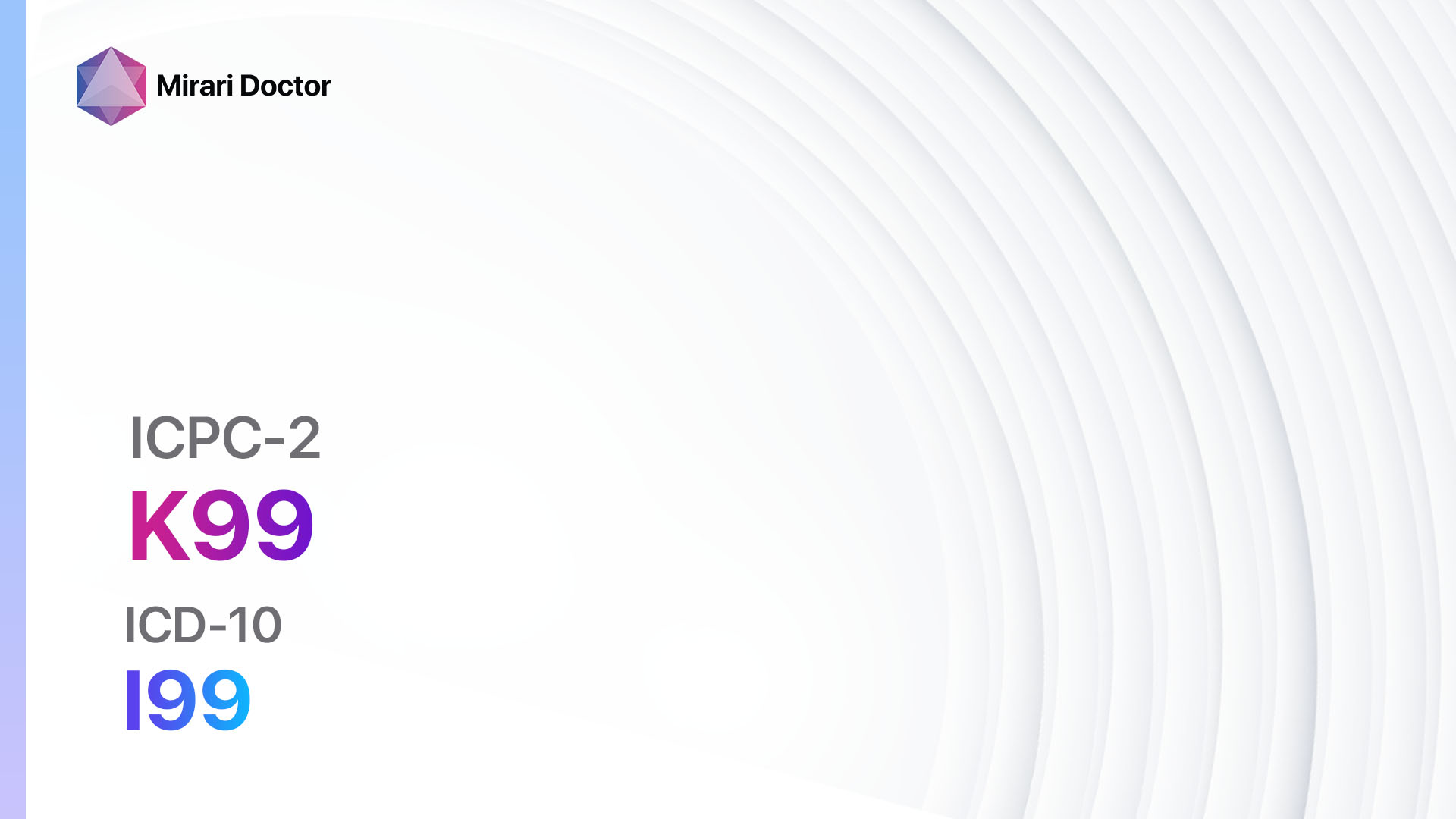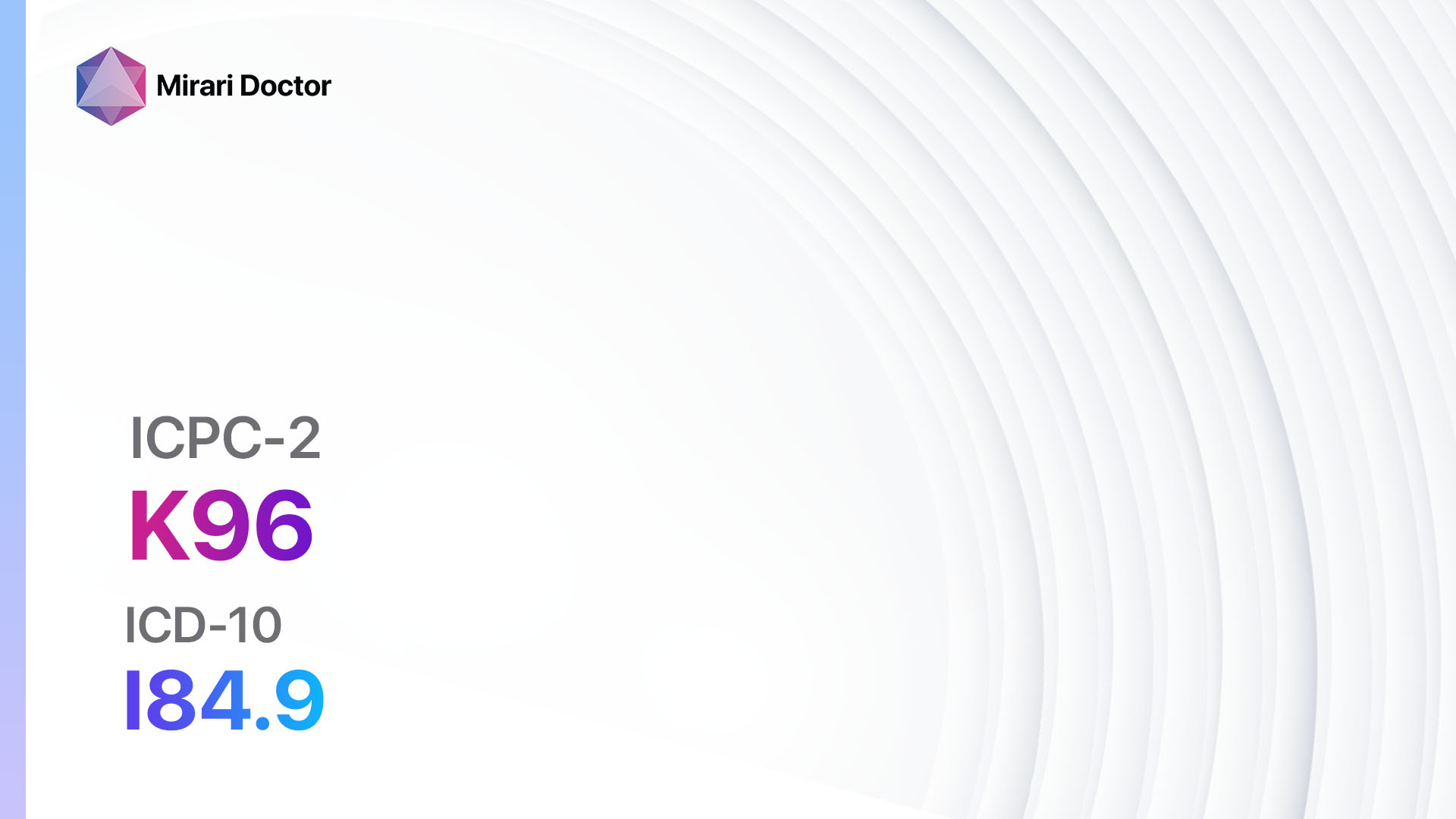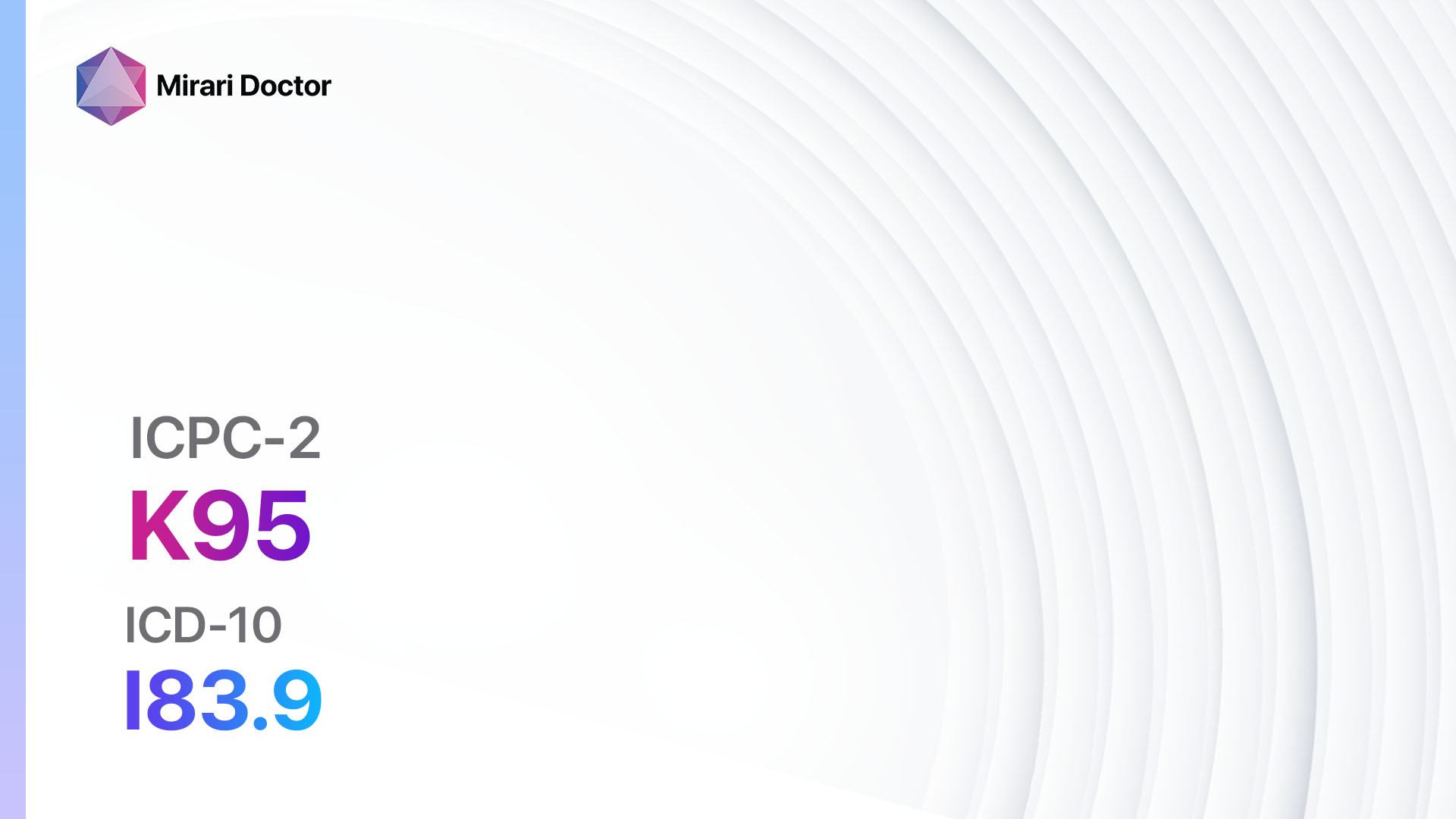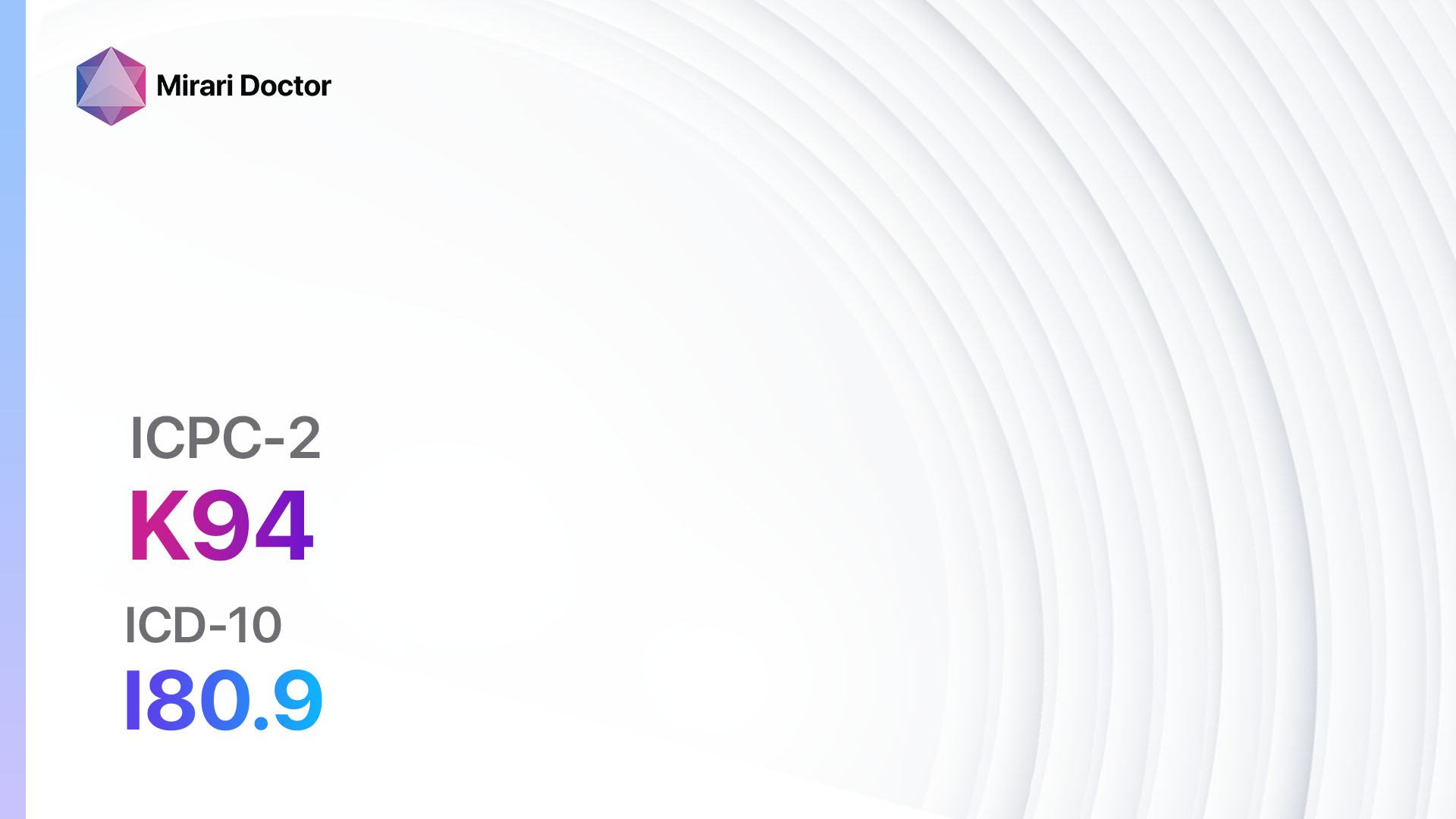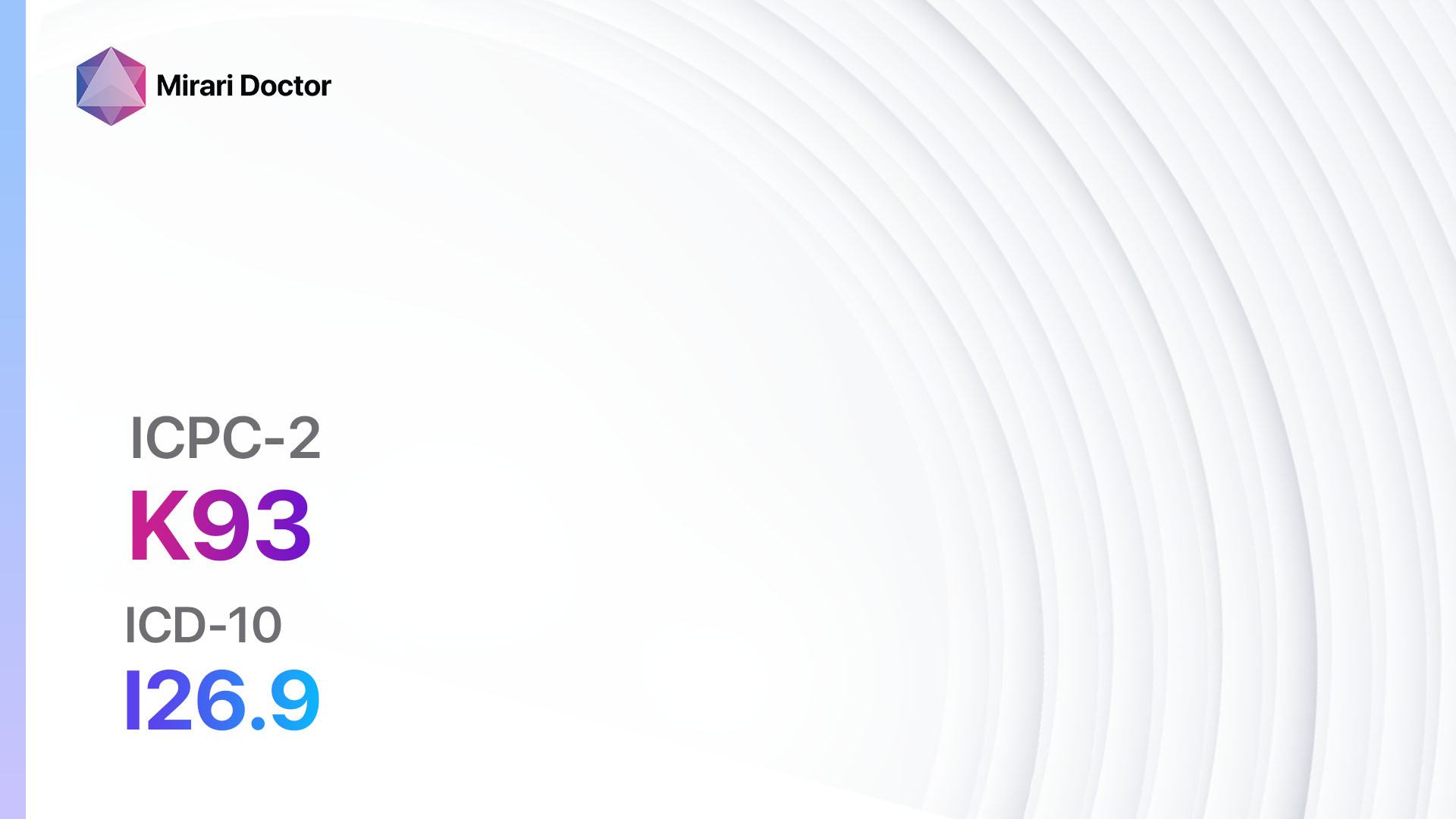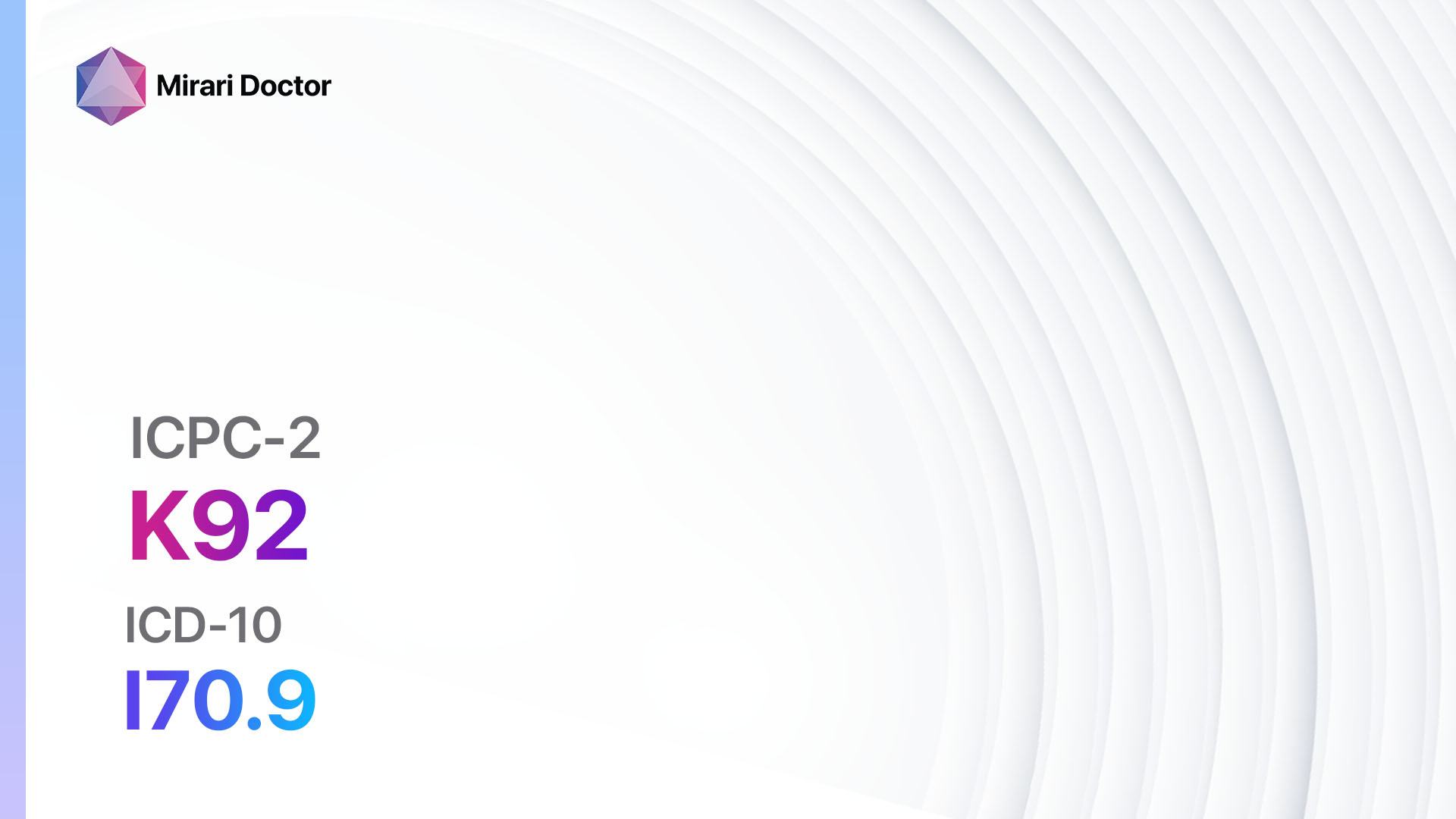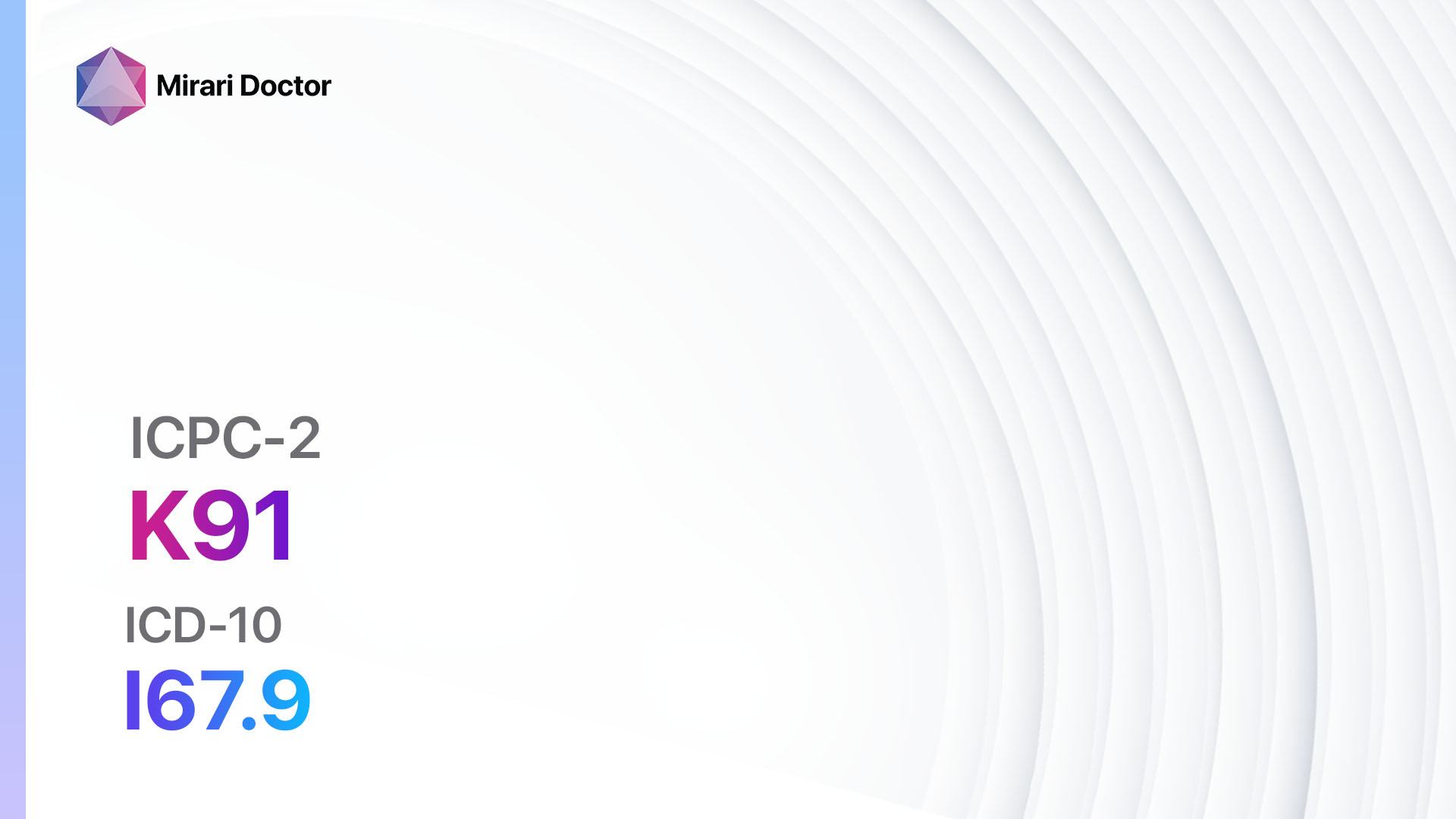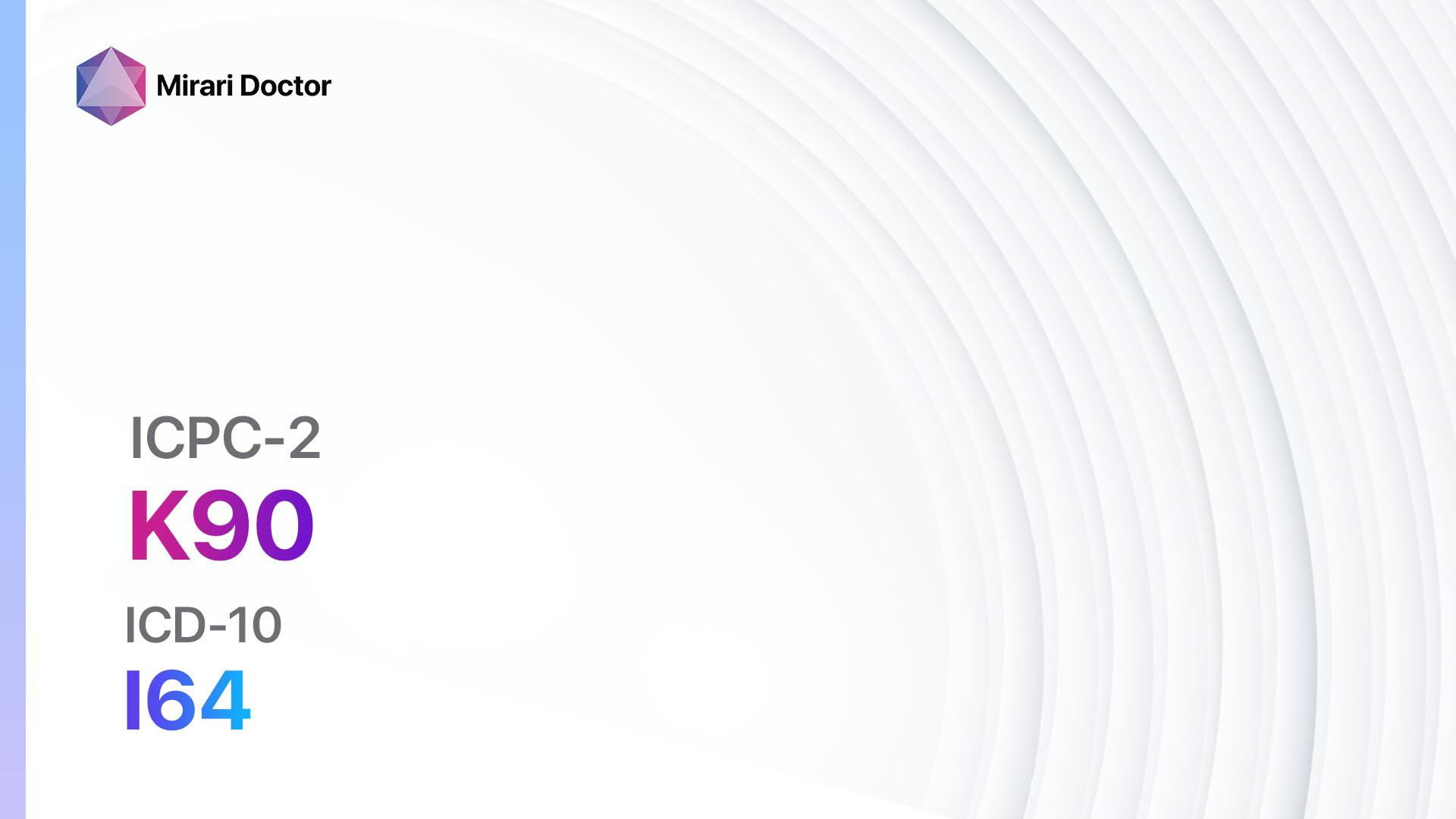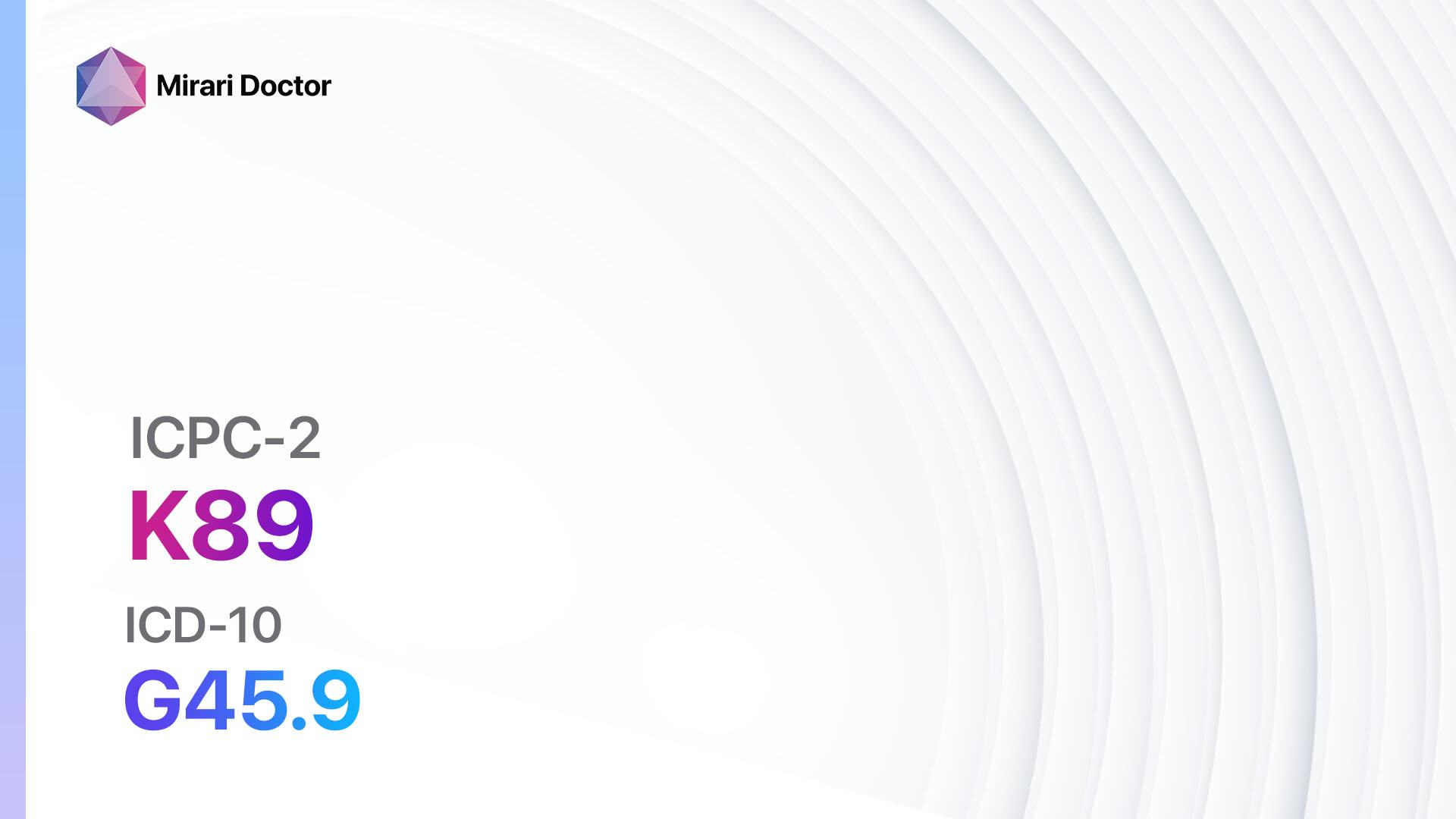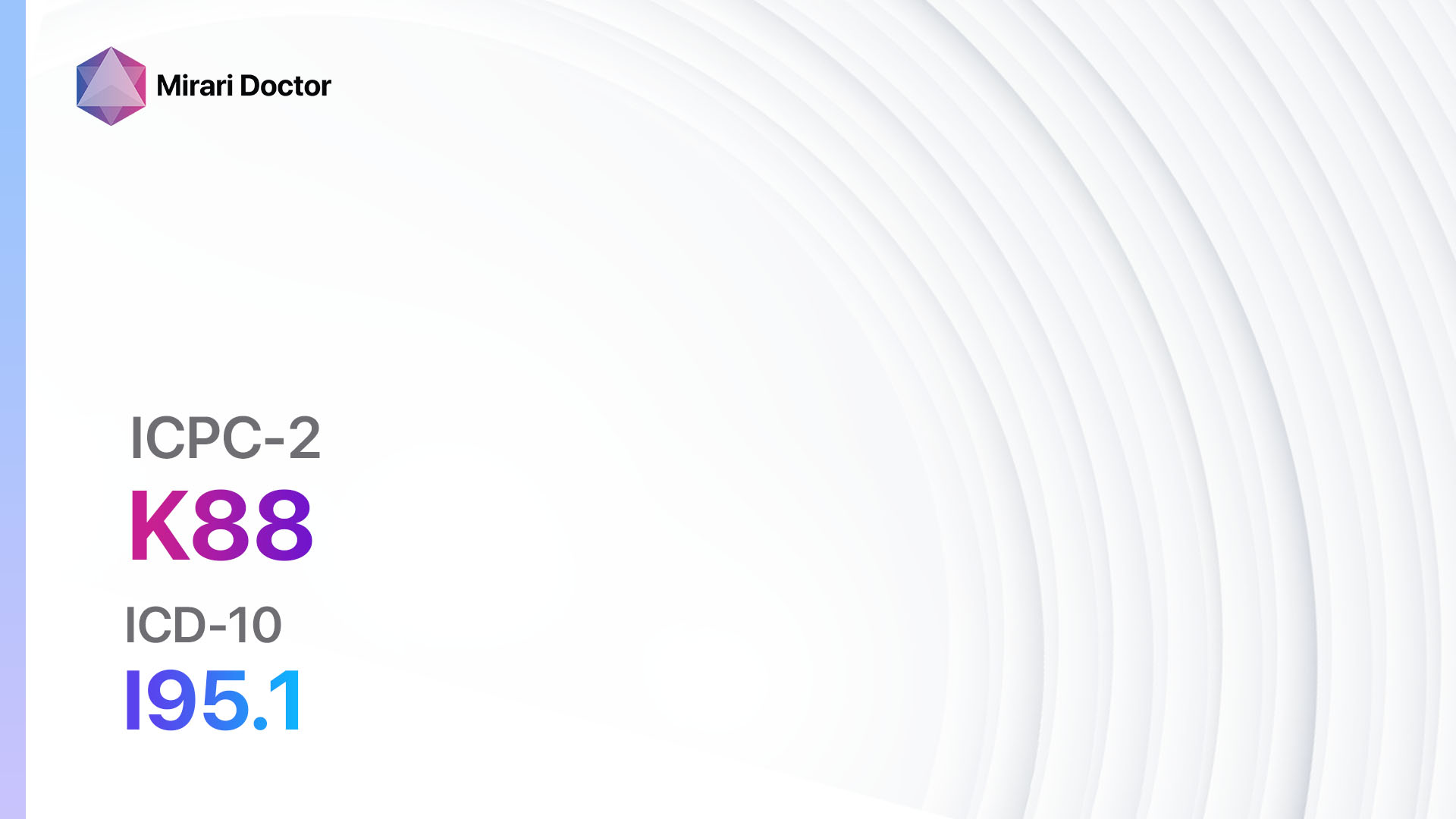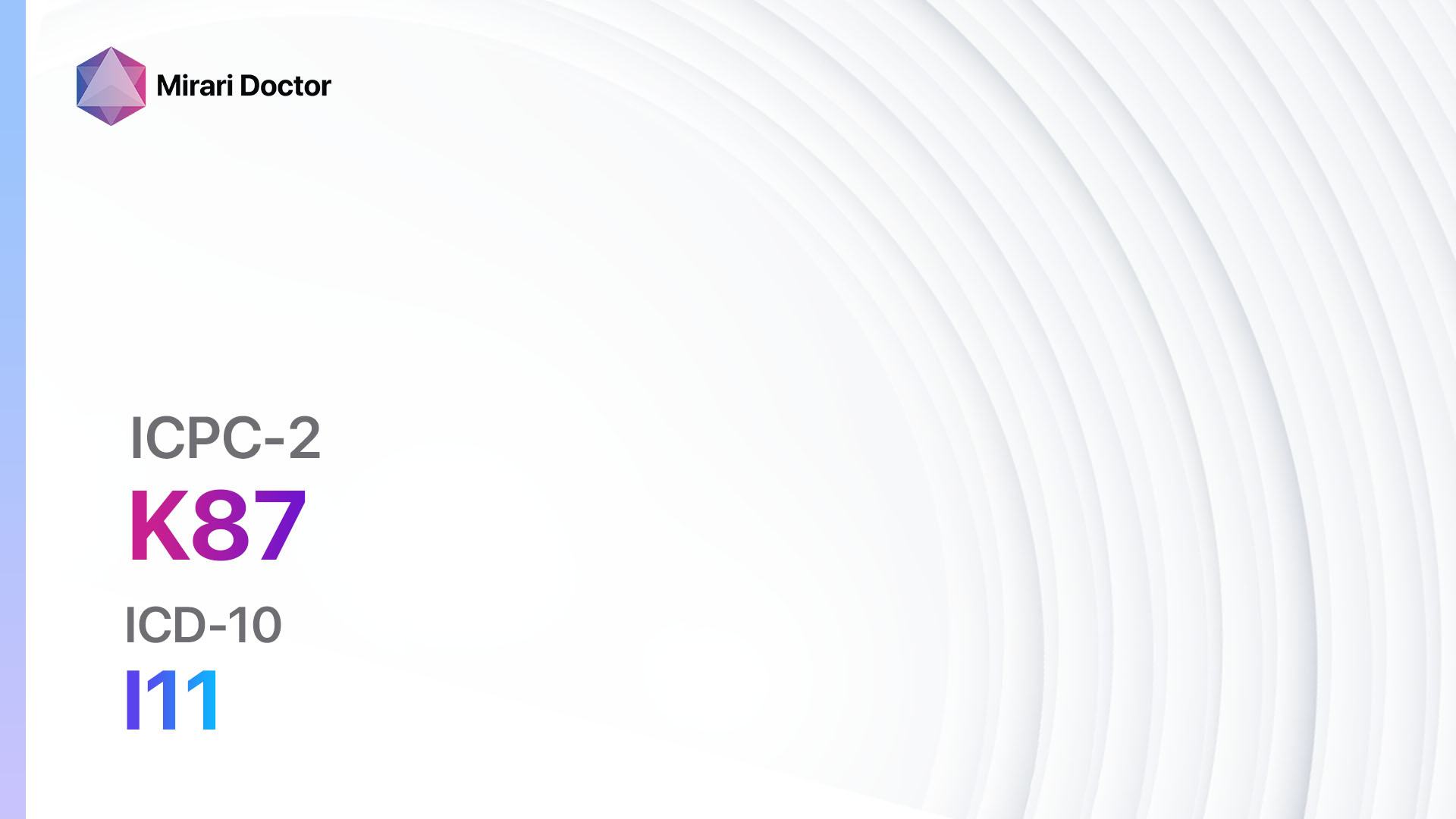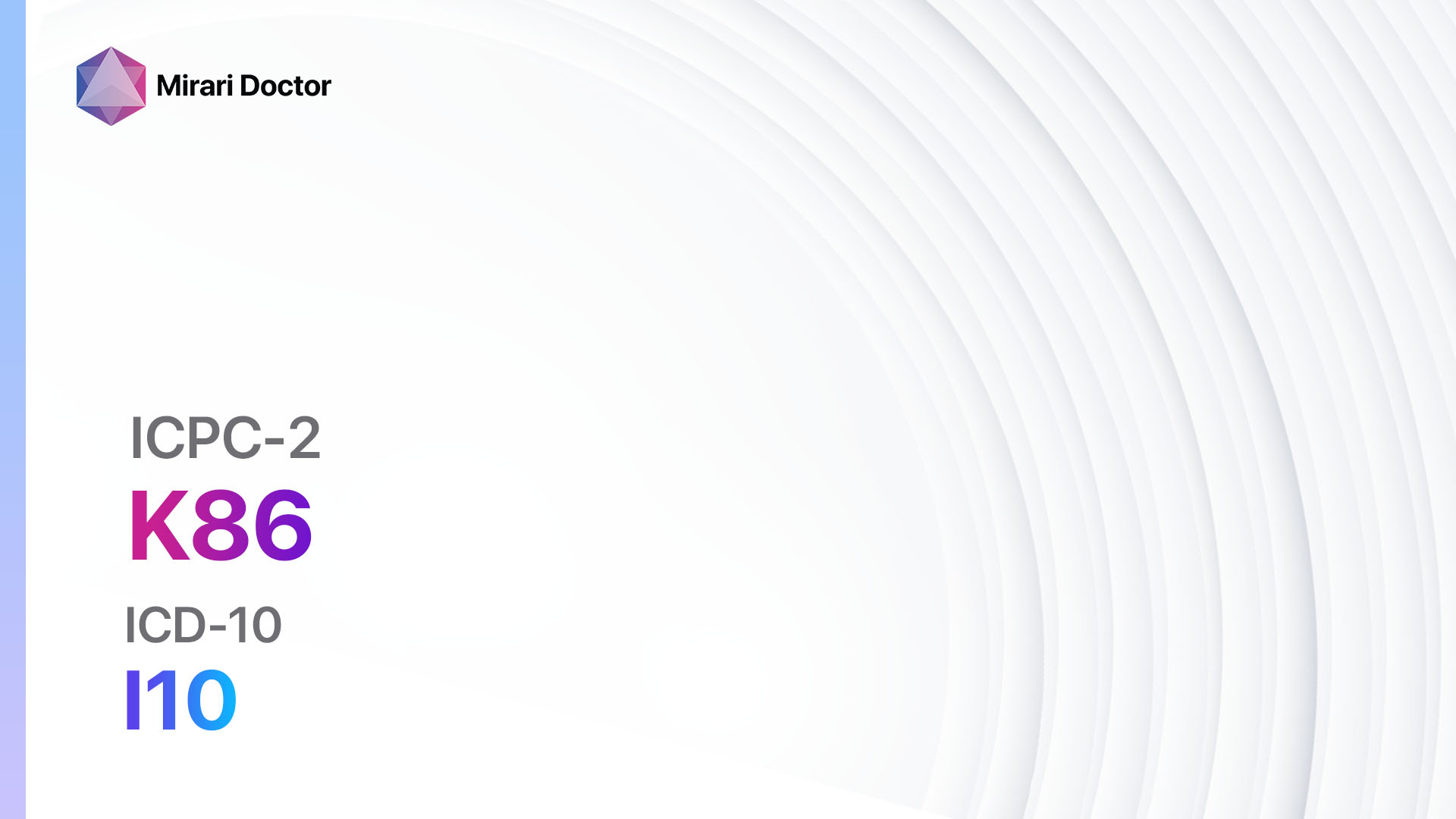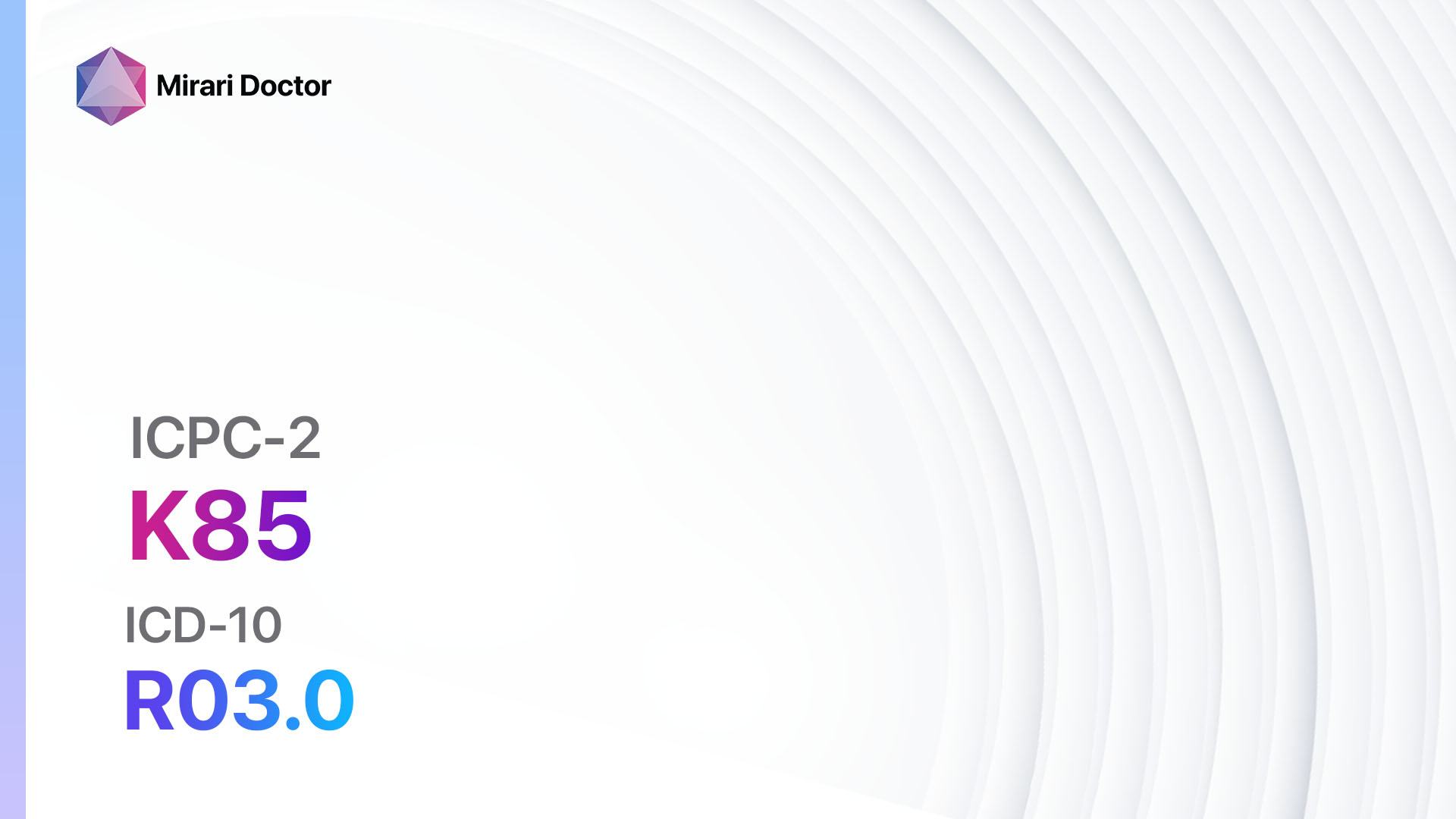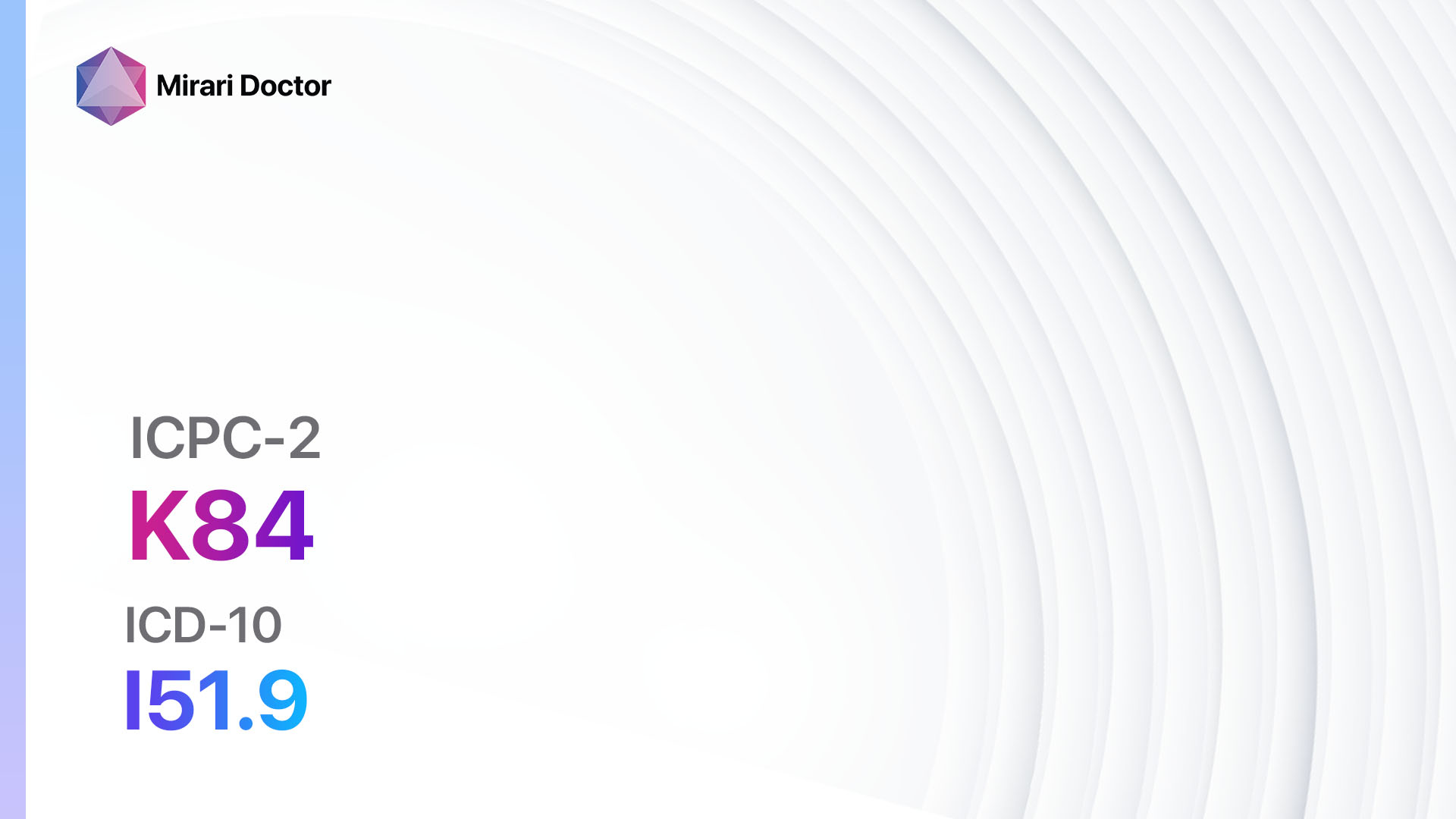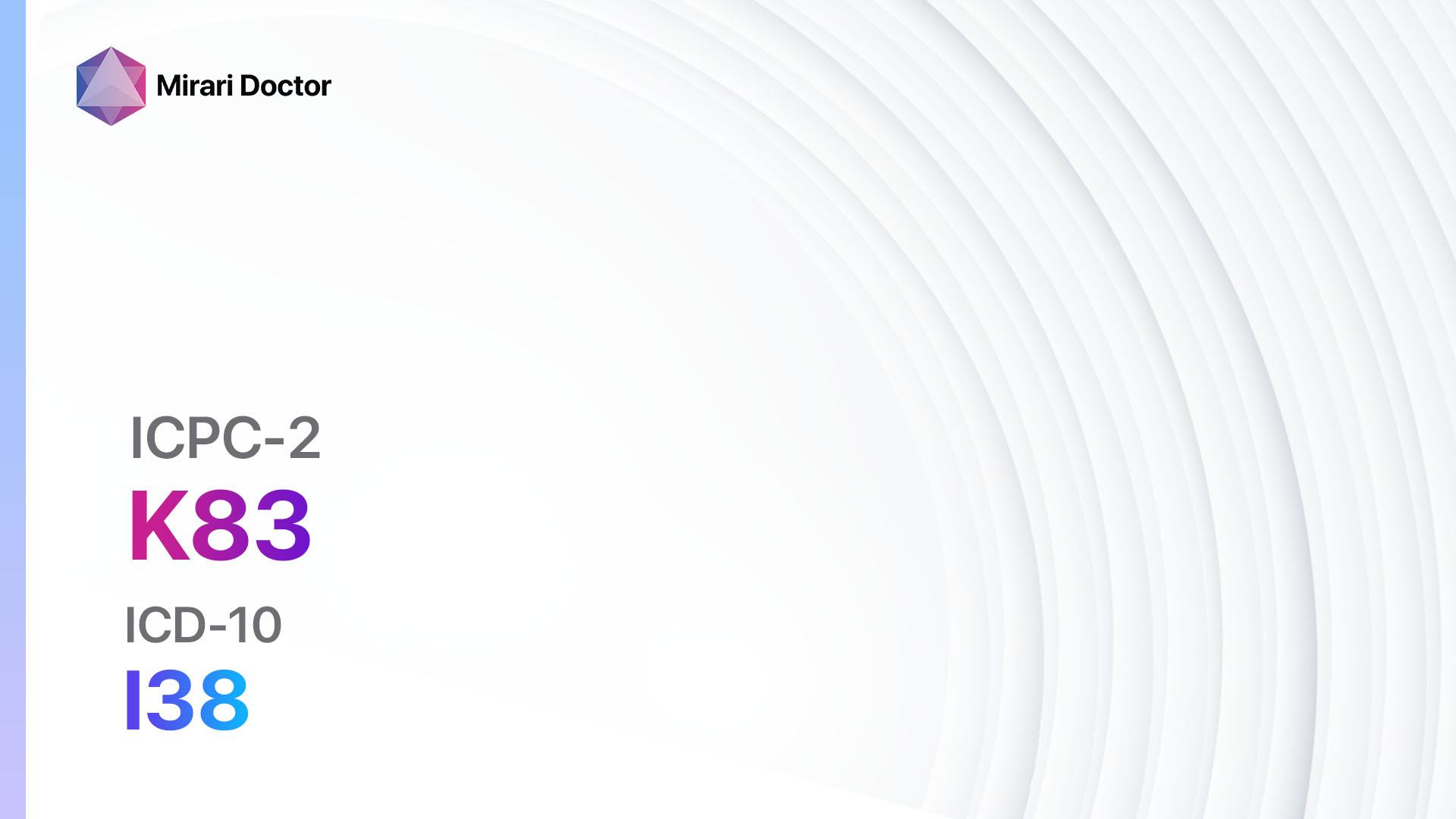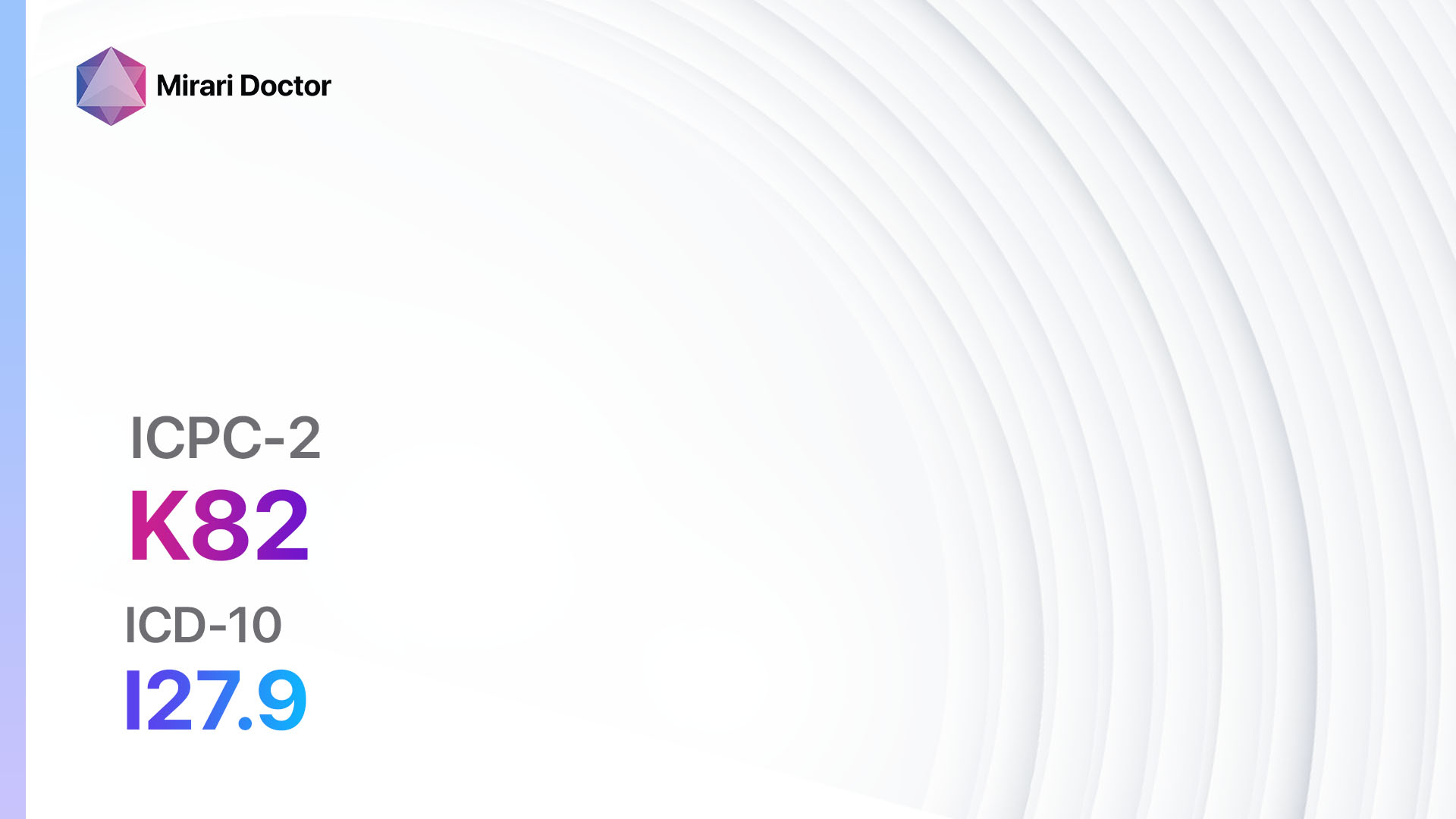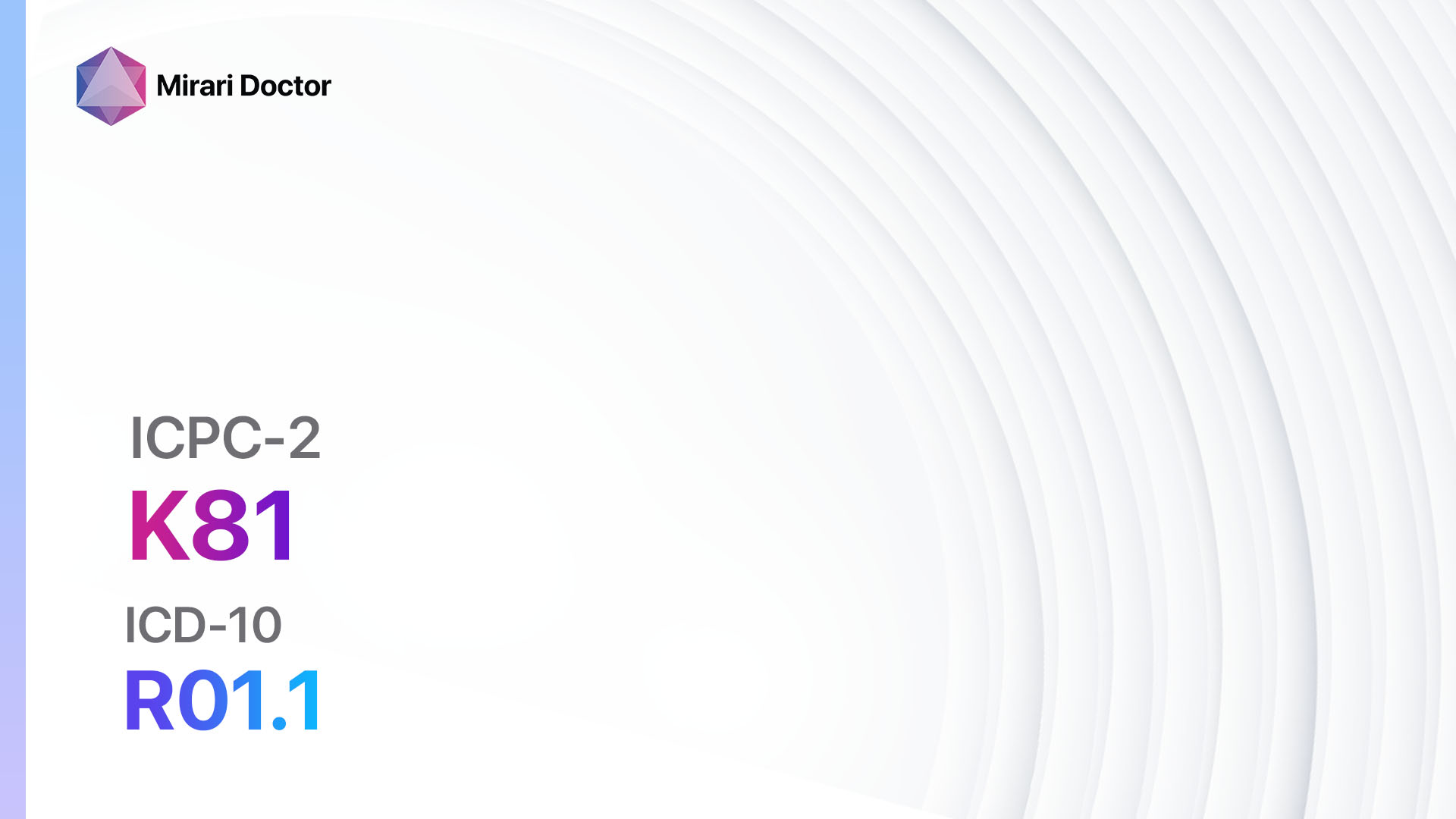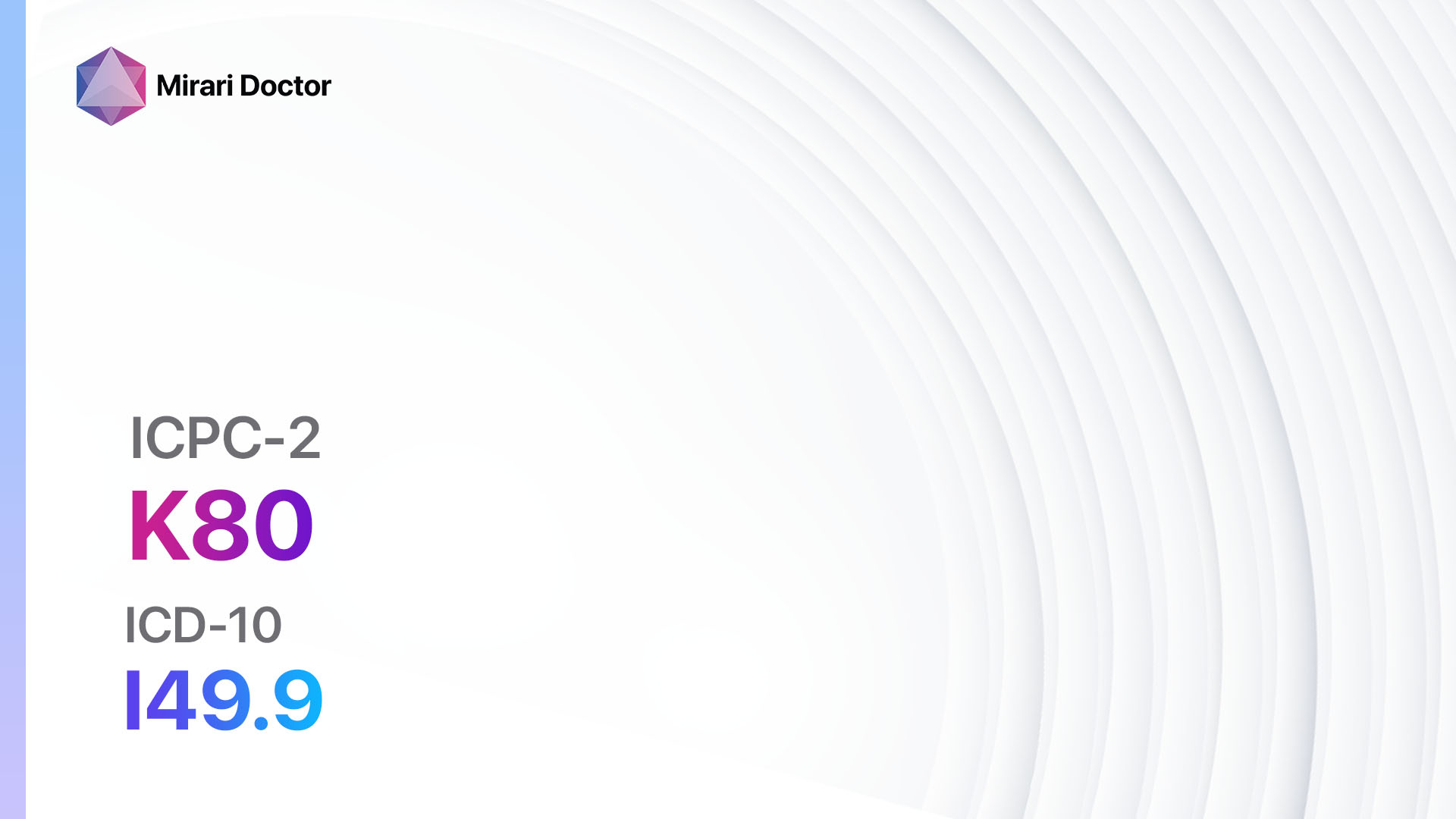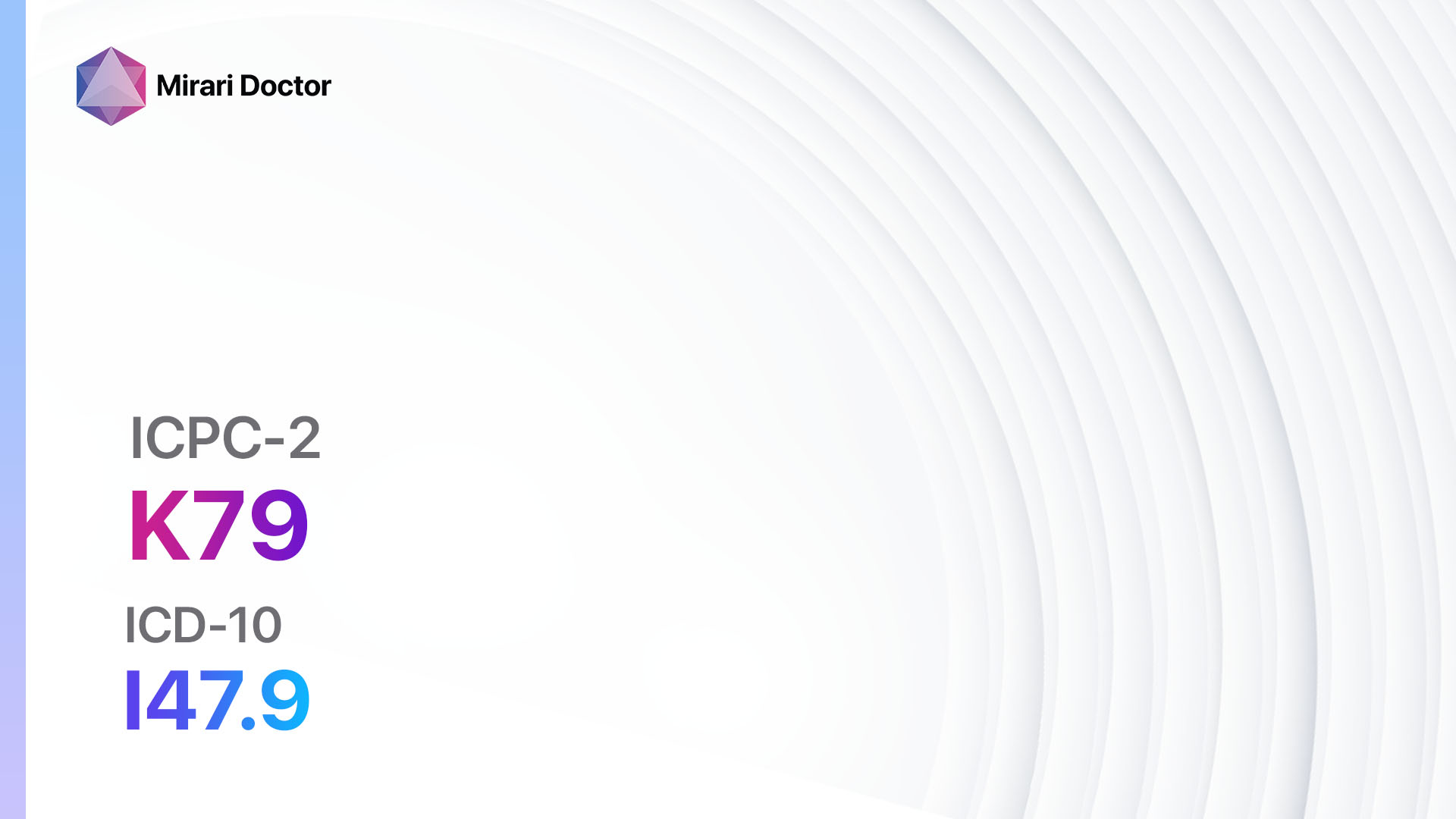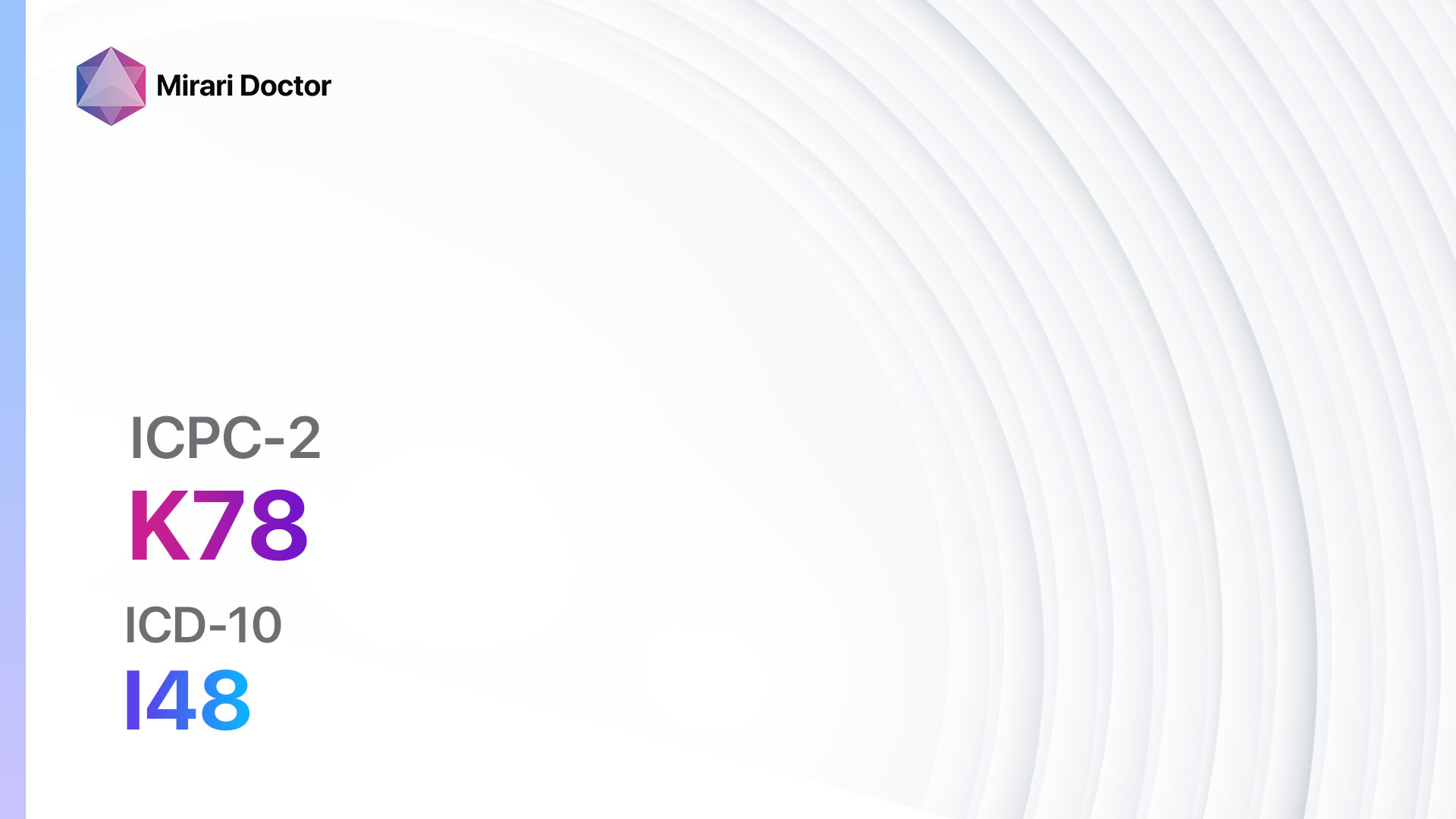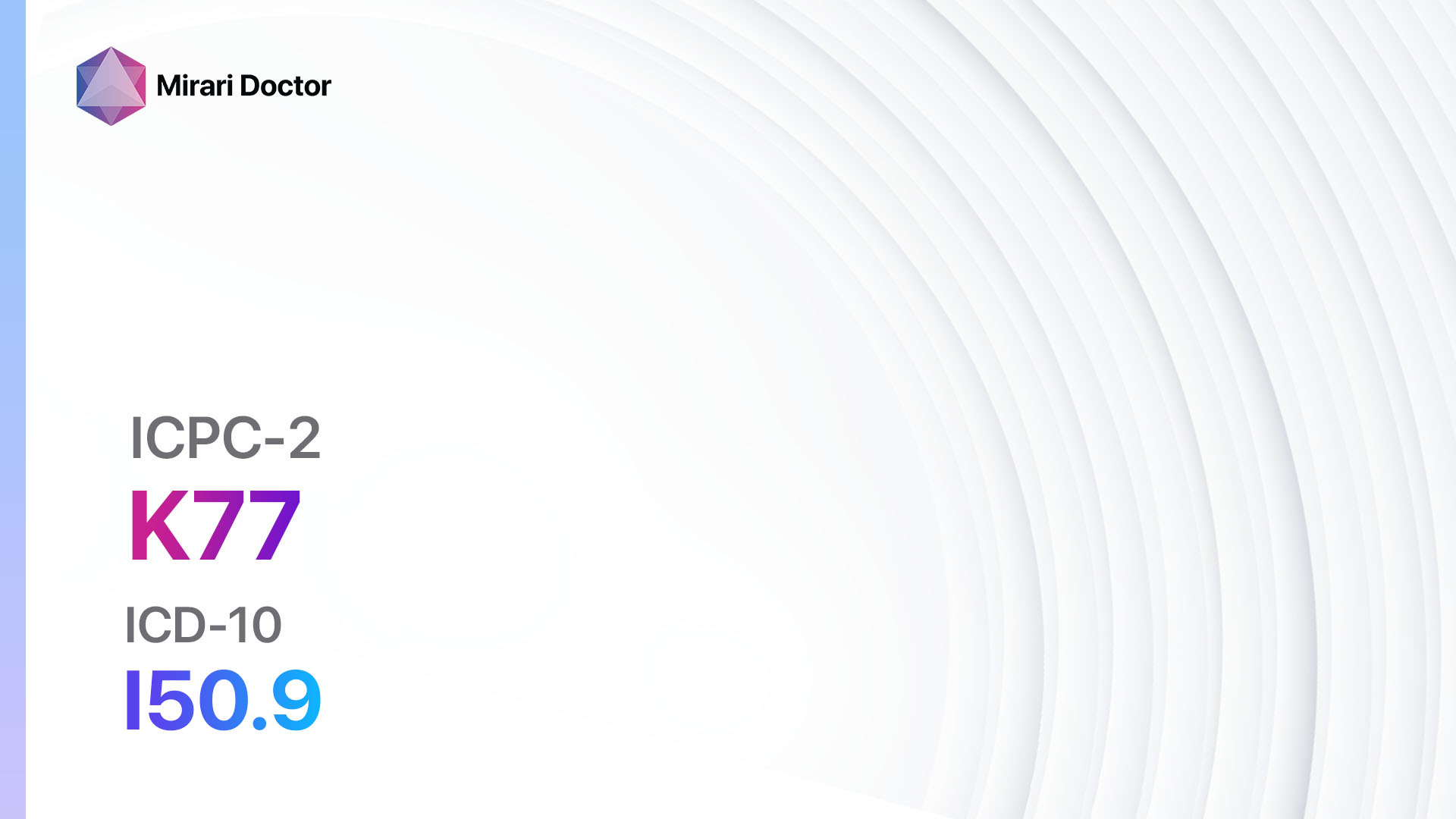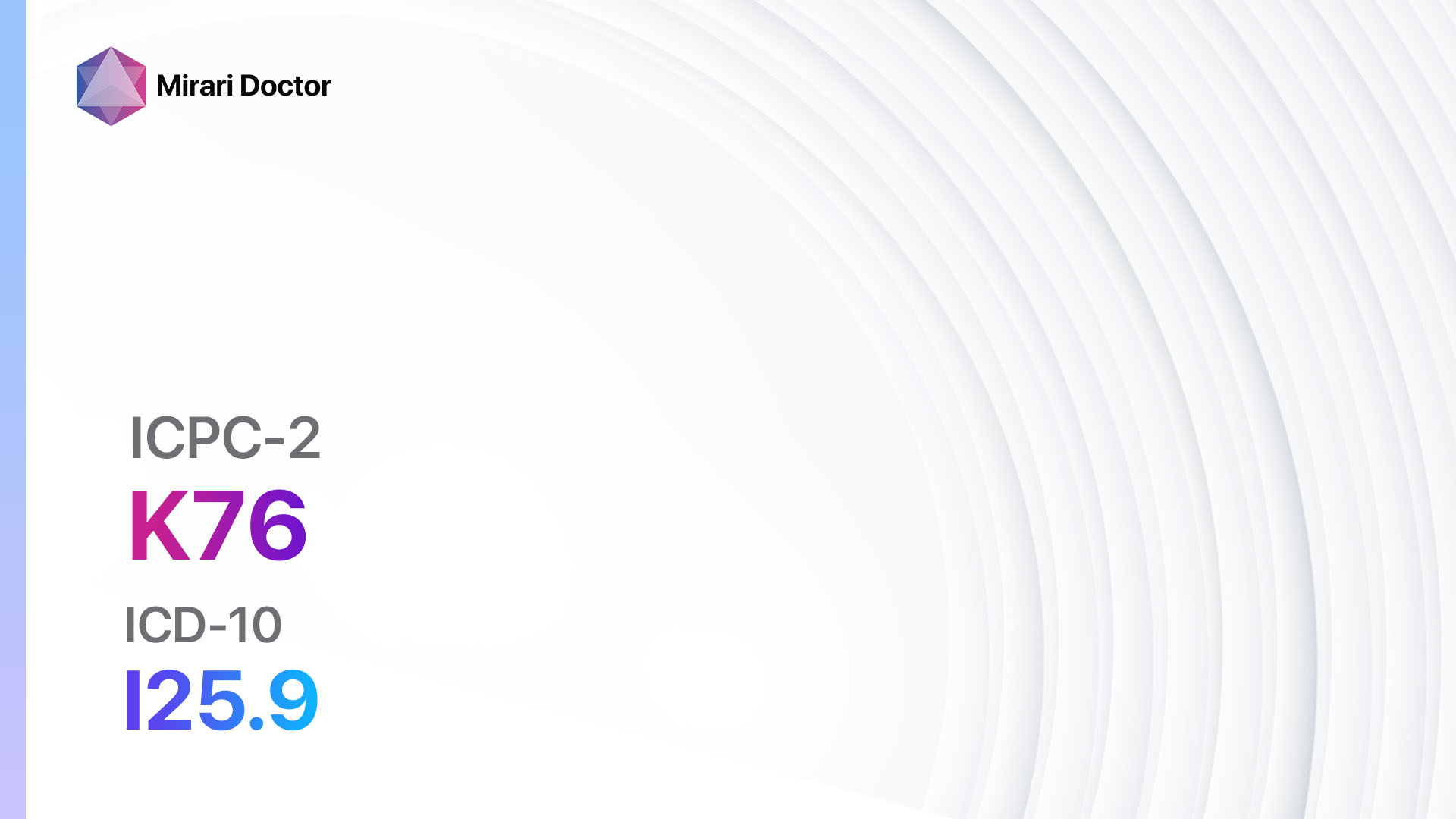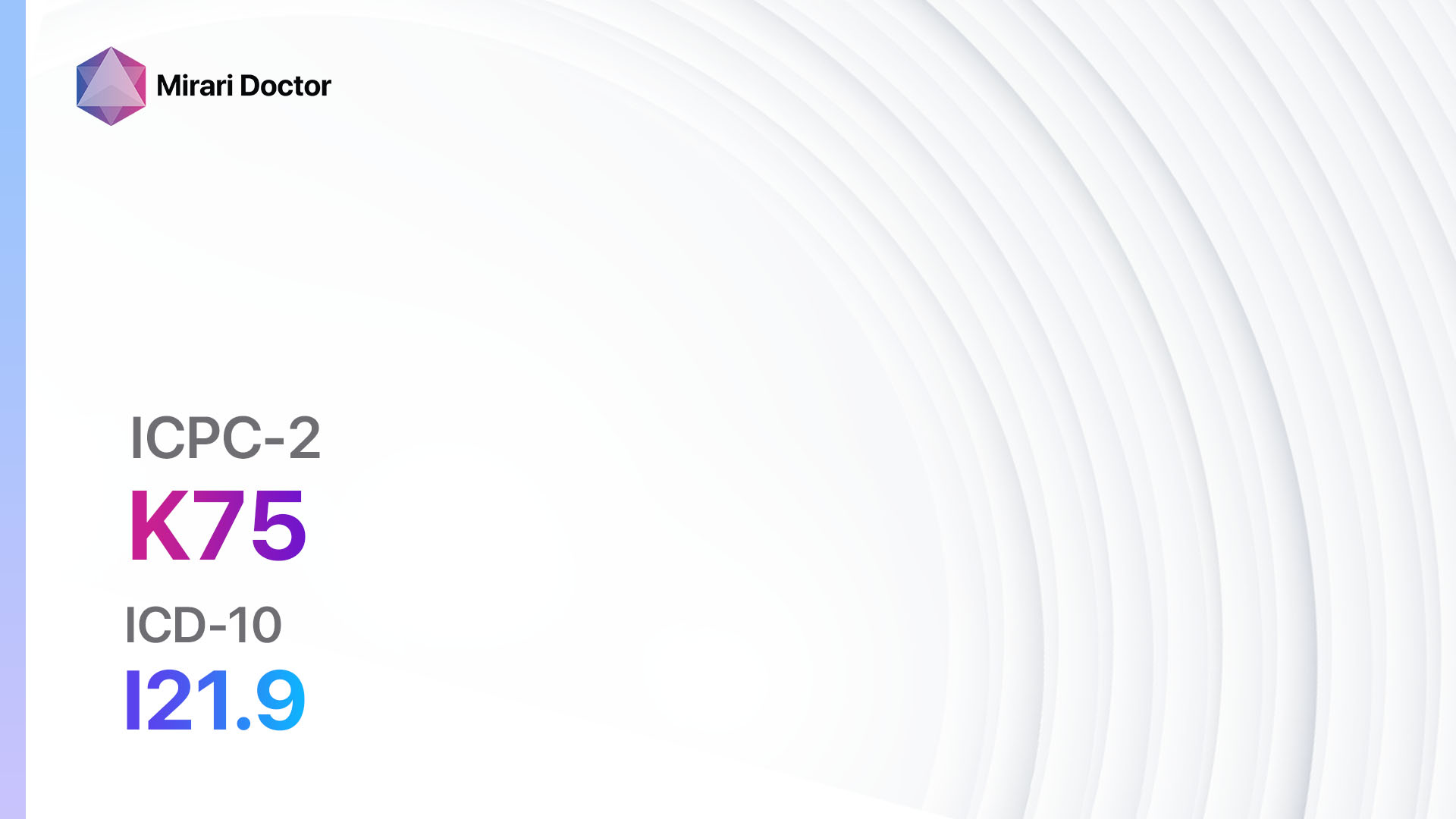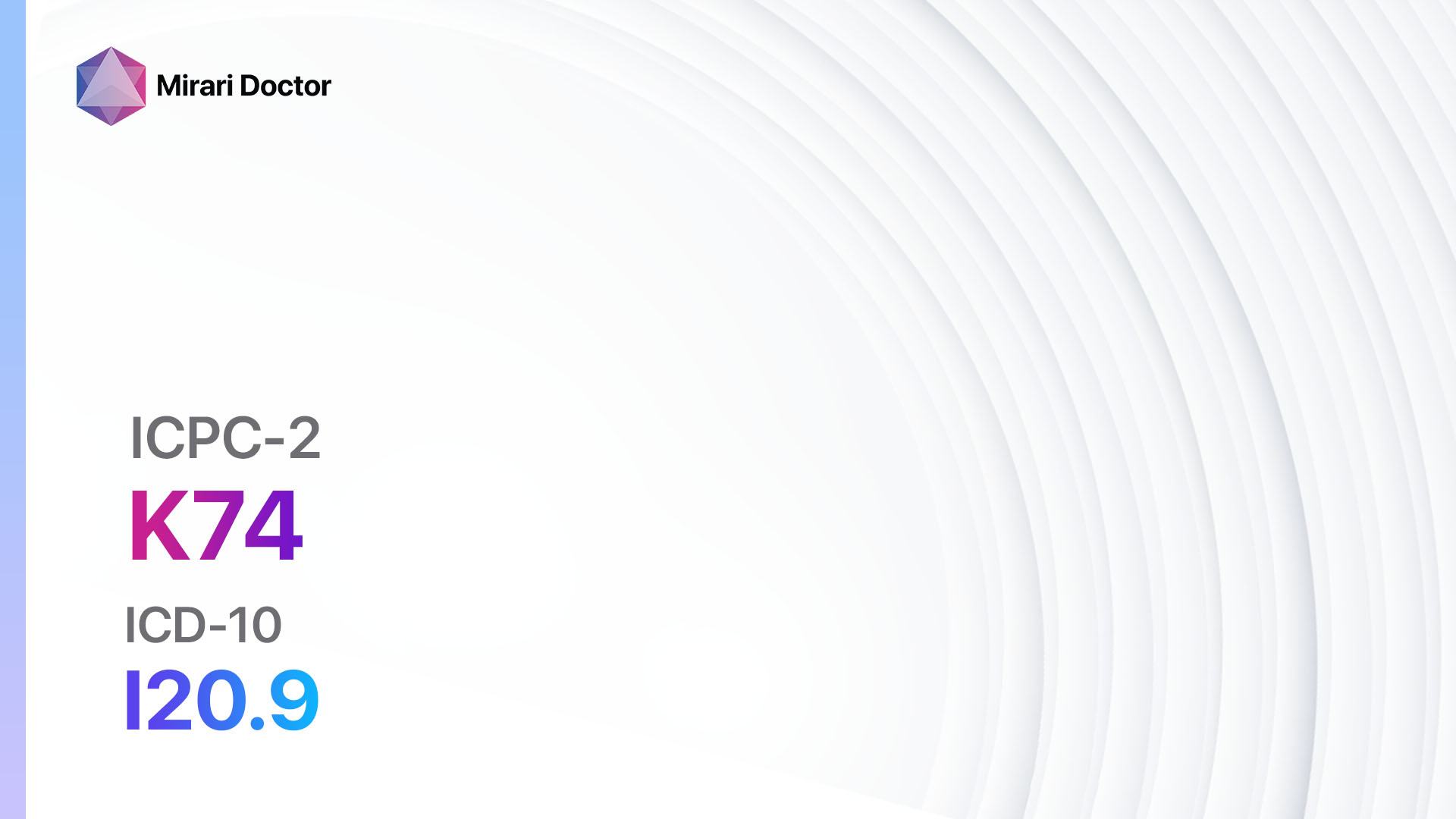
Introduction
Ischaemic heart disease with angina is a condition characterized by reduced blood flow to the heart, leading to chest pain or discomfort[1]. It is a significant health concern as it can result in heart attacks and other serious complications[2]. The aim of this guide is to provide healthcare professionals with a comprehensive overview of the diagnosis and management of ischaemic heart disease with angina.
Codes
- ICPC-2 Code: K74 Ischaemic heart disease w. angina[3]
- ICD-10 Code: I20.9 Angina pectoris, unspecified[4]
Symptoms
- Chest pain or discomfort: Typically described as a squeezing, pressure, heaviness, or tightness in the chest. The pain may radiate to the arms, shoulders, neck, jaw, or back[5].
- Shortness of breath: Difficulty breathing or a feeling of breathlessness, especially during physical activity or emotional stress[6].
- Fatigue: Feeling tired or exhausted even with minimal exertion[7].
- Nausea or indigestion: Some individuals may experience these symptoms, particularly women[8].
- Sweating: Profuse sweating, often accompanied by other symptoms[9].
Causes
- Atherosclerosis: Build-up of plaque in the arteries, leading to narrowing and reduced blood flow[10].
- Coronary artery spasm: Sudden constriction of the coronary arteries, reducing blood flow to the heart.
- Blood clot: Formation of a blood clot in a coronary artery, blocking blood flow.
- Risk factors: High blood pressure, high cholesterol, smoking, diabetes, obesity, family history of heart disease, sedentary lifestyle, and stress.
Diagnostic Steps
Medical History
- Gather information about the patient’s risk factors, medical conditions, and symptoms related to ischaemic heart disease with angina.
- Ask about the frequency, duration, and intensity of chest pain or discomfort.
- Inquire about any triggers or relieving factors for the symptoms.
- Assess the patient’s medical history, including previous heart conditions, surgeries, and medications.
- Evaluate the patient’s lifestyle habits, such as smoking, diet, exercise, and stress levels.
Physical Examination
- Measure blood pressure, heart rate, and respiratory rate.
- Listen to the heart sounds using a stethoscope to detect any abnormal rhythms or murmurs.
- Perform a thorough examination of the chest, looking for signs of heart failure or fluid accumulation.
- Assess peripheral pulses and check for any signs of peripheral artery disease.
- Examine the extremities for signs of edema or cyanosis.
Laboratory Tests
- Lipid profile: Measures total cholesterol, LDL cholesterol, HDL cholesterol, and triglyceride levels.
- Fasting blood glucose: Assesses blood sugar levels to screen for diabetes.
- Complete blood count: Checks for anemia or other blood abnormalities.
- Cardiac biomarkers: Measures levels of troponin and creatine kinase-MB to evaluate heart muscle damage.
- Thyroid function tests: Determines if thyroid dysfunction is contributing to the symptoms.
- Coagulation profile: Evaluates the blood’s ability to clot and rule out any clotting disorders.
Diagnostic Imaging
- Electrocardiogram (ECG): Records the electrical activity of the heart to detect any abnormalities, such as ischemia or arrhythmias.
- Stress test: Evaluates the heart’s response to physical exertion, either through exercise or medication-induced stress.
- Echocardiogram: Uses ultrasound waves to create images of the heart’s structure and function.
- Coronary angiography: Invasive procedure that involves injecting a contrast dye into the coronary arteries to visualize any blockages or narrowing.
- CT coronary angiography: Non-invasive imaging technique that provides detailed images of the coronary arteries.
- Nuclear imaging: Uses radioactive tracers to assess blood flow and heart function.
Other Tests
- Ambulatory ECG monitoring: Records the heart’s electrical activity over a prolonged period, typically 24 to 48 hours, to capture any intermittent abnormalities.
- Cardiac catheterization: Invasive procedure that involves inserting a catheter into the heart to measure pressures and obtain more detailed information about the coronary arteries.
- Genetic testing: May be considered in individuals with a strong family history of ischaemic heart disease to identify any genetic predispositions.
Follow-up and Patient Education
- Schedule regular follow-up appointments to monitor the patient’s condition and adjust treatment as necessary.
- Educate the patient about the importance of lifestyle modifications, including a heart-healthy diet, regular exercise, smoking cessation, stress management, and medication adherence.
- Provide information about the signs and symptoms of a heart attack and when to seek immediate medical attention.
- Discuss the potential complications of ischaemic heart disease with angina and the importance of ongoing management to prevent further damage to the heart.
Possible Interventions
Traditional Interventions
Medications:
Top 5 drugs for Ischaemic heart disease with angina:
- Nitroglycerin (sublingual or spray):
- Cost: $10-$50 for a pack of 25 tablets.
- Contraindications: Hypersensitivity to nitroglycerin, severe anemia, increased intracranial pressure.
- Side effects: Headache, dizziness, flushing.
- Severe side effects: Severe hypotension, methemoglobinemia.
- Drug interactions: Phosphodiesterase-5 inhibitors (e.g., sildenafil), beta-blockers.
- Warning: May cause tolerance with prolonged use.
- Beta-blockers (e.g., Metoprolol, Atenolol):
- Cost: Generic versions are typically <$30/month.
- Contraindications: Severe bradycardia, heart block, uncontrolled heart failure.
- Side effects: Fatigue, dizziness, bradycardia.
- Severe side effects: Bronchospasm, heart block.
- Drug interactions: Calcium channel blockers, insulin.
- Warning: Should not be abruptly stopped.
- Calcium channel blockers (e.g., Amlodipine, Diltiazem):
- Cost: Generic versions can be $10-$50/month.
- Contraindications: Severe hypotension, heart block, heart failure.
- Side effects: Peripheral edema, headache, dizziness.
- Severe side effects: Heart failure exacerbation, bradycardia.
- Drug interactions: Beta-blockers, grapefruit juice.
- Warning: Monitor blood pressure and heart rate.
- Aspirin:
- Cost: Inexpensive (<$10/month).
- Contraindications: Active bleeding, peptic ulcer disease.
- Side effects: Upset stomach, bleeding.
- Severe side effects: Severe bleeding, allergic reactions.
- Drug interactions: NSAIDs, other blood thinners.
- Warning: Risk of bleeding.
- Statins (e.g., Atorvastatin, Simvastatin, Rosuvastatin):
- Cost: Generic versions can be $3-$50/month.
- Contraindications: Active liver disease, hypersensitivity.
- Side effects: Muscle pain, diarrhea, upset stomach.
- Severe side effects: Rhabdomyolysis, liver damage.
- Drug interactions: Grapefruit juice, other cholesterol-lowering agents.
- Warning: Regular liver function tests required.
Alternative Drugs:
- Angiotensin-converting enzyme (ACE) inhibitors (e.g., Ramipril, Lisinopril): Used in patients with hypertension or heart failure.
- Angiotensin receptor blockers (ARBs) (e.g., Losartan, Valsartan): Alternative to ACE inhibitors in patients who cannot tolerate them.
- Nitrates (e.g., Isosorbide mononitrate): Long-acting nitrate used for prophylaxis of angina.
- Antiplatelet agents (e.g., Clopidogrel, Ticagrelor): Used in patients with acute coronary syndrome or stent placement.
Surgical Procedures:
- Coronary angioplasty and stent placement: A catheter is used to place a stent to open up narrowed arteries.
- Cost: $15,000 to $50,000.
- Coronary artery bypass surgery (CABG): Redirects blood around blocked or narrowed coronary arteries.
- Cost: $70,000 to $200,000.
Alternative Interventions
- Acupuncture: May help improve blood flow and reduce pain.
- Cost: $60-$120 per session.
- Chelation therapy: Controversial treatment involving the administration of chelating agents to remove heavy metals from the body.
- Cost: $75-$150 per session.
- Hyperbaric oxygen therapy: Involves breathing pure oxygen in a pressurized chamber to increase oxygen delivery to tissues.
- Cost: $200-$300 per session.
- Herbal supplements: Some herbs, such as garlic and ginkgo biloba, may have potential benefits for improving circulation.
- Cost: Varies depending on the specific supplement.
Lifestyle Interventions
- Dietary modifications: Encourage a heart-healthy diet low in saturated fats, trans fats, cholesterol, and sodium.
- Cost: Varies depending on food choices.
- Regular exercise: Recommend at least 150 minutes of moderate-intensity aerobic activity per week.
- Cost: Varies depending on the chosen exercise regimen.
- Smoking cessation: Provide resources and support to help patients quit smoking.
- Cost: Varies depending on the chosen smoking cessation method.
- Stress management: Teach stress reduction techniques, such as deep breathing exercises, meditation, or yoga.
- Cost: Varies depending on the chosen stress management approach.
- Weight management: Encourage weight loss in overweight or obese individuals.
- Cost: Varies depending on the chosen weight loss program or interventions.
It is important to note that the cost ranges provided are approximate and may vary depending on the location and availability of the interventions.
Mirari Cold Plasma Alternative Intervention
Understanding Mirari Cold Plasma
- Safe and Non-Invasive Treatment: Mirari Cold Plasma is a safe and non-invasive treatment option for various skin conditions. It does not require incisions, minimizing the risk of scarring, bleeding, or tissue damage.
- Efficient Extraction of Foreign Bodies: Mirari Cold Plasma facilitates the removal of foreign bodies from the skin by degrading and dissociating organic matter, allowing easier access and extraction.
- Pain Reduction and Comfort: Mirari Cold Plasma has a local analgesic effect, providing pain relief during the treatment, making it more comfortable for the patient.
- Reduced Risk of Infection: Mirari Cold Plasma has antimicrobial properties, effectively killing bacteria and reducing the risk of infection.
- Accelerated Healing and Minimal Scarring: Mirari Cold Plasma stimulates wound healing and tissue regeneration, reducing healing time and minimizing the formation of scars.
Mirari Cold Plasma Prescription
Video instructions for using Mirari Cold Plasma Device – K74 Ischaemic heart disease w. angina (ICD-10:I20.9)
| Mild | Moderate | Severe |
| Mode setting: 1 (Infection) Location: 5 (Lungs) Morning: 15 minutes, Evening: 15 minutes | Mode setting: 1 (Infection) Location: 5 (Lungs) Morning: 30 minutes, Lunch: 30 minutes, Evening: 30 minutes | Mode setting: 1 (Infection) Location: 5 (Lungs) Morning: 30 minutes, Lunch: 30 minutes, Evening: 30 minutes |
| Mode setting: 2 (Wound Healing) Location: 5 (Lungs) Morning: 15 minutes, Evening: 15 minutes | Mode setting: 2 (Wound Healing) Location: 5 (Lungs) Morning: 30 minutes, Lunch: 30 minutes, Evening: 30 minutes | Mode setting: 2 (Wound Healing) Location: 5 (Lungs) Morning: 30 minutes, Lunch: 30 minutes, Evening: 30 minutes |
| Mode setting: 7 (Immunotherapy) Location: 1 (Sacrum) Morning: 15 minutes, Evening: 15 minutes | Mode setting: 7 (Immunotherapy) Location: 1 (Sacrum) Morning: 30 minutes, Lunch: 30 minutes, Evening: 30 minutes | Mode setting: 7 (Immunotherapy) Location: 1 (Sacrum) Morning: 30 minutes, Lunch: 30 minutes, Evening: 30 minutes |
| Mode setting:7 (Immunotherapy) Location:4 (Heart, Bile & Pancreas) Morning: 15 minutes, Evening: 15 minutes | Mode setting:7 (Immunotherapy) Location:4 (Heart, Bile & Pancreas) Morning: 30 minutes, Lunch: 30 minutes, Evening: 30 minutes | Mode setting:7 (Immunotherapy) Location:4 (Heart, Bile & Pancreas) Morning: 30 minutes, Lunch: 30 minutes, Evening: 30 minutes |
| Total Morning:60minutesapprox.$10USD, Evening:60minutesapprox.$10USD | Total Morning:120minutesapprox.$20USD, Lunch:120minutesapprox. $20 USD, Evening:120minutesapprox. $20 USD, | Total Morning:120minutesapprox.$20USD, Lunch:120minutesapprox. $20 USD, Evening:120minutesapprox. $20 USD, |
| Usualtreatmentfor7-60daysapprox.$140USD–$1200USD | Usualtreatmentfor6-8weeksapprox.$2,520USD–$3,360USD | Usualtreatmentfor3-6monthsapprox.$5,400USD–$10,800USD |
 |
|
Use the Mirari Cold Plasma device to treat Ischaemic heart disease w. angina effectively.
WARNING: MIRARI COLD PLASMA IS DESIGNED FOR THE HUMAN BODY WITHOUT ANY ARTIFICIAL OR THIRD PARTY PRODUCTS. USE OF OTHER PRODUCTS IN COMBINATION WITH MIRARI COLD PLASMA MAY CAUSE UNPREDICTABLE EFFECTS, HARM OR INJURY. PLEASE CONSULT A MEDICAL PROFESSIONAL BEFORE COMBINING ANY OTHER PRODUCTS WITH USE OF MIRARI.
Step 1: Cleanse the Skin
- Start by cleaning the affected area of the skin with a gentle cleanser or mild soap and water. Gently pat the area dry with a clean towel.
Step 2: Prepare the Mirari Cold Plasma device
- Ensure that the Mirari Cold Plasma device is fully charged or has fresh batteries as per the manufacturer’s instructions. Make sure the device is clean and in good working condition.
- Switch on the Mirari device using the power button or by following the specific instructions provided with the device.
- Some Mirari devices may have adjustable settings for intensity or treatment duration. Follow the manufacturer’s instructions to select the appropriate settings based on your needs and the recommended guidelines.
Step 3: Apply the Device
- Place the Mirari device in direct contact with the affected area of the skin. Gently glide or hold the device over the skin surface, ensuring even coverage of the area experiencing.
- Slowly move the Mirari device in a circular motion or follow a specific pattern as indicated in the user manual. This helps ensure thorough treatment coverage.
Step 4: Monitor and Assess:
- Keep track of your progress and evaluate the effectiveness of the Mirari device in managing your Ischaemic heart disease w. angina. If you have any concerns or notice any adverse reactions, consult with your health care professional.
Note
This guide is for informational purposes only and should not replace the advice of a medical professional. Always consult with your healthcare provider or a qualified medical professional for personal advice, diagnosis, or treatment. Do not solely rely on the information presented here for decisions about your health. Use of this information is at your own risk. The authors of this guide, nor any associated entities or platforms, are not responsible for any potential adverse effects or outcomes based on the content.
Mirari Cold Plasma System Disclaimer
- Purpose: The Mirari Cold Plasma System is a Class 2 medical device designed for use by trained healthcare professionals. It is registered for use in Thailand and Vietnam. It is not intended for use outside of these locations.
- Informational Use: The content and information provided with the device are for educational and informational purposes only. They are not a substitute for professional medical advice or care.
- Variable Outcomes: While the device is approved for specific uses, individual outcomes can differ. We do not assert or guarantee specific medical outcomes.
- Consultation: Prior to utilizing the device or making decisions based on its content, it is essential to consult with a Certified Mirari Tele-Therapist and your medical healthcare provider regarding specific protocols.
- Liability: By using this device, users are acknowledging and accepting all potential risks. Neither the manufacturer nor the distributor will be held accountable for any adverse reactions, injuries, or damages stemming from its use.
- Geographical Availability: This device has received approval for designated purposes by the Thai and Vietnam FDA. As of now, outside of Thailand and Vietnam, the Mirari Cold Plasma System is not available for purchase or use.
References
- Knuuti, J., Wijns, W., Saraste, A., Capodanno, D., Barbato, E., Funck-Brentano, C., … & Bax, J. J. (2020). 2019 ESC Guidelines for the diagnosis and management of chronic coronary syndromes: The Task Force for the diagnosis and management of chronic coronary syndromes of the European Society of Cardiology (ESC). European Heart Journal, 41(3), 407-477.
- Fihn, S. D., Gardin, J. M., Abrams, J., Berra, K., Blankenship, J. C., Dallas, A. P., … & Williams, S. V. (2012). 2012 ACCF/AHA/ACP/AATS/PCNA/SCAI/STS guideline for the diagnosis and management of patients with stable ischemic heart disease: a report of the American College of Cardiology Foundation/American Heart Association task force on practice guidelines, and the American College of Physicians, American Association for Thoracic Surgery, Preventive Cardiovascular Nurses Association, Society for Cardiovascular Angiography and Interventions, and Society of Thoracic Surgeons. Journal of the American College of Cardiology, 60(24), e44-e164.
- World Organization of Family Doctors. (2016). ICPC-2: International Classification of Primary Care. Oxford University Press.
- World Health Organization. (2019). International statistical classification of diseases and related health problems (11th ed.).
- Ohman, E. M. (2016). Chronic stable angina. New England Journal of Medicine, 374(12), 1167-1176.
- Montalescot, G., Sechtem, U., Achenbach, S., Andreotti, F., Arden, C., Budaj, A., … & Yildirir, A. (2013). 2013 ESC guidelines on the management of stable coronary artery disease: the Task Force on the management of stable coronary artery disease of the European Society of Cardiology. European Heart Journal, 34(38), 2949-3003.
- Qaseem, A., Fihn, S. D., Dallas, P., Williams, S., Owens, D. K., & Shekelle, P. (2012). Management of stable ischemic heart disease: summary of a clinical practice guideline from the American College of Physicians/American College of Cardiology Foundation/American Heart Association/American Association for Thoracic Surgery/Preventive Cardiovascular Nurses Association/Society of Thoracic Surgeons. Annals of Internal Medicine, 157(10), 735-743.
- Mehta, P. K., & Bairey Merz, C. N. (2020). Angina in women without obstructive coronary artery disease. Current Cardiology Reports, 22(5), 1-9.
- Gibbons, R. J., Chatterjee, K., Daley, J., Douglas, J. S., Fihn, S. D., Gardin, J. M., … & Spertus, J. A. (1999). ACC/AHA/ACP-ASIM guidelines for the management of patients with chronic stable angina: a report of the American College of Cardiology/American Heart Association Task Force on Practice Guidelines (Committee on Management of Patients With Chronic Stable Angina). Journal of the American College of Cardiology, 33(7), 2092-2197.
- Libby, P., & Theroux, P. (2005). Pathophysiology of coronary artery disease. Circulation, 111(25), 3481-3488.
Related articles
Made in USA


